The blend of size, power, and technology within the defense sector has, over the years, evolved, allowing giant defense contractors to develop their remarkable defense vehicles. Science has witnessed excellent growth, and the military gears are a complete workforce of precision, designed to withstand a broad scale of declared materials’ lifespans, permit use at the last required limit, and ensure their reliability during the mission’s most important part. This paper discusses several instances that have led to hope and revolution, drawing on the history of defense engine research and prospects involving conventional state activity and the defense industry in general. It will significantly foster public understanding of how engines are used to propel military vehicles and technical literature, albeit after a specific amount of research.
Overview of Military Motors
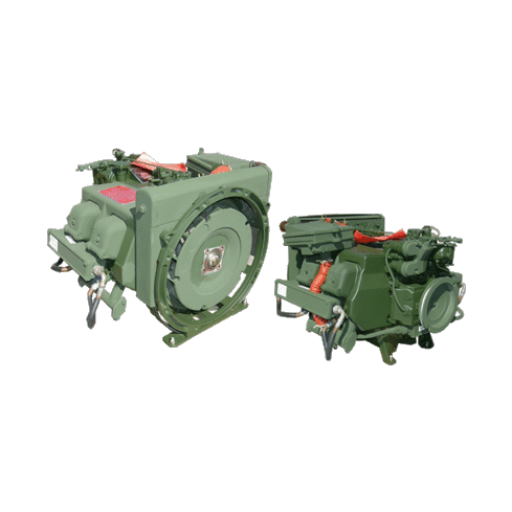
Military motors are the engines in an army’s arsenal that are used to power different types of tanks, APCs, transport trucks, and others. Their primary purpose is to meet the requirements of the armed forces command. This requires fulfilling conditions of operation in often unfavourable conditions, the ability to carry heavy loads, and performing as stipulated for the given operating environment. Recently designed military motors have paid attention to these aspects, allowing the last of the three aspects to be accomplished through hybrid power plans, thereby ensuring fuel economy, reducing emissions, and enhancing performance. This underscores the fact that concern and perhaps improvement in driving forces to wear are their ability to complement any one of the rapid development projects.
Definition and Importance
Military motors are deliberately classified as propulsion systems engineered to provide power to vehicles, machines, and other gear used in military and national security operations. There are certain principles that these motors should follow to enable them to operate effectively in various military situations. In the military, it has sanction for the removal of applications of motors in labs, making them over. Since its inception, military motors have proven their importance to the extent that it is difficult to discuss military operations without leaving them out.
Recent technological breakthroughs have demonstrated a shift in the development and design of military vehicles, facilitated by modern hybrid electric engines. These engines can reduce the fuel consumption and operating expenses of an internal combustion engine while increasing the efficiency of fuel usage by such engine elements. Additionally, it has come to the public’s attention that such systems can enable military vehicles to travel 25% further, thereby enhancing their operational utility. Cognizant of such factors, attention continues to be directed towards increasing the duration of machine and product usage. Given that priorities have already been set, proper materials and structures are developed to resist even the toughest and greatest stresses. These Commitments clearly signify the essence of military organizations in increasing operational depths and supporting capabilities in the high-technology era.
Historical Context
Many militaries around the world developed the idea of military cars in the early 20th century, in line with the general development of military technology during World War I. A development that has seen the movement of military hardware from wheeled to engine-driven systems that have significantly improved maneuverability as well as logistics. As the conflict in World War II escalated, the development of automotive technology led to the creation of improved tanks, trucks, and jeeps that could cope with the most challenging conditions, while also being capable of serving in a wide range of operations. The Cold War was marked by significant advancements, as Diesel Engines were integrated into vehicles and better, fuel-efficient designs emerged, allowing forces to stay in the field for extended periods. Presently, military vehicles are very sophisticated and equipped with hybrid and electric technologies that are environmentally friendly, efficient, and work well under various combat conditions. These cases serve as one of many illustrations that highlight the need for improvement in military technologies to cope with modern conflict scenarios.
Current Trends in Military Motors
The military ground system industry is undergoing rapid change, partly due to the innovation of hybrid and fully electric power systems. As the above technologies are being developed, it is also worth mentioning the energy conservation in the context of mitigating the use of traditional sources. There has been considerable interest, for instance, in upgrading the power control systems to develop the service capabilities package further, especially for power-based equipments to be used in various types of military defense vehicles, as well as those for naval or aerial applications. Moreover, the use of unmanned assets, specifically with technology like Autonomous Precision Strike, is at an all-time low in minimizing the human capital used in mission objectives during combat operations, thanks to the significant developments in robotic technologies.
Moreover, a noteworthy indication in the military industry is the increasing attention paid to improving thermal management systems. Sophisticated heat transfer methods are necessary for prolonging the life of high-power electric motors and for operating faultlessly in the most extreme climates – such as scorching deserts or icy Antarctica. Moreover, applying composite materials in the production of a motor makes it lighter, allowing for increased performance levels in a vehicle, while maintaining its primary mechanics of construction and material of production, ensuring it remains efficient. These developments are essentially a direction towards military motor solutions that are more manageable, efficient, sustainable, and resilient to the pressures of modern warfare.
Types of Military Engines
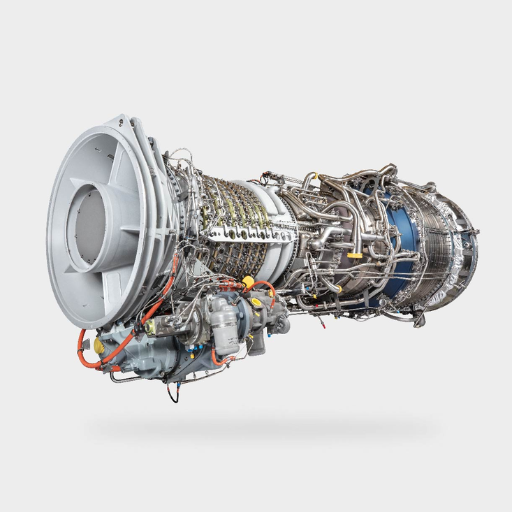
Jet Engines
Over the years, jet engines have been employed mainly in military aircraft due to their ability to provide high speed and efficiency. These jet engines work by compressing air, infusing it with fuel, and burning it, which results in the production of thrust. The variants of these jet engines are the Turbojet, Turbofan, and Ramjet, which are quite functional in various aircraft.
Diesel Engines
If we examine the latest military vehicles, such as tanks and armored personnel carriers, there is one additional item equipped on them: a diesel engine. What diesel engines can offer is reliability with extreme fuel efficiency, and of course, the capacity to handle a lot of very high torques at the rear wheels of those vehicles and machines.
Gas Turbine Engines
In larger vehicles, such as ships and specific aircraft, gas turbines are utilized. This engine is essentially composed due to its robustness and overall operational flexibility, which can suit all types of environments.
Electric Motors
The use of Electric motors for military applications has been increasing over time, especially in modern equipment like drones. The absence or minimal presence of noise levels emanating from the engines means the motors do not require as much maintenance as those that need comprehensive maintenance, while providing these environmental benefits.
Hybrid Engines
Hybrid engines are released when traditional fuel-based engines no longer justify the availability of hybrid or other power sources, such as electric, which offer more fuel efficiency and reduced consumption. These fuel-type hybrids are already becoming quite popular in modern defense and other unexpected military applications.
Compare Common Types of Military Engines
| Engine Type | Power Output | Fuel Efficiency | Durability | Weight | Noise Level | Common Uses |
|---|---|---|---|---|---|---|
| Diesel Engines | Moderate | High | High | Heavy | Low | Naval ships, submarines, ground vehicles |
| Gas Turbine Engines | High | Moderate | Moderate | Light | High | Ships, tanks, fast combat vehicles |
| Jet Engines | Very High | Low | High | Light | Very High | Aircraft and drones |
| Electric Engines | Low to Moderate | Very High (if charged) | Low to Moderate | Light | Very Low | Submarines, unmanned vehicles |
| Hybrid Engines | High | Moderate to High | High | Moderate | Moderate | Versatile, vehicles needing adaptability |
Conventional Engines
Meanwhile, conventional internal combustion engines are still used in various applications, excluding military ones. These engines function by consuming fuel, which causes combustion that transforms the energy into mechanical power, enabling them to operate adequately. For example, this power is used to move cars and operate construction plants. The uptake, however, has been accelerated by improvements in materials and engine design, making internal combustion engines more effective. Additionally, alternative types currently use only gasoline and diesel. Environmental conservation efforts to curb this menace have led to improvements in the efficiency of these fuels, resulting in an increase in emissions; thus, efforts to reduce exhaust use are significant. Through research, they are also known as mechanical engines. They are designed into a driven system, making it as efficient and environmentally friendly as possible, combining the comfort of old cars with the necessity of reducing the significant emissions that the planet is currently suffering from.
Electric Propulsion Systems
Electric propulsion systems are innovative technologies in transportation that focus on saving the environment and money instead. In these systems, locomotion is implemented using electric motors connected to energy either stored in batteries or generated by fuel cells. This way, the harmful emissions inside the vehicle are eliminated while the dependence on the dwindling supply of petroleum for all road transport is significantly reduced. New types of batteries are practical t be high or ultra high drain type like lithium ion batteries, rechargeable alkaline battery and the more futuristic solid state based cells in addition to the above mentioned alkaline batteries. And that means electric vehicles (EVs) are edging closer to the day of widespread use. Equally importantly, the advent of regenerative systems in motor vehicles makes it possible not only to recover energy but also to store it. It suffices to say that different countries and industries have expressed a strong commitment to the development of electric drive infrastructure and any potential for effective linkage to the programming and regulatory methods applied in the area of electricity generation. This encouraging dynamic reaffirms the importance of transitioning to electric transport as a means of addressing the overwhelming issue of global warming.
Applications in Military Vehicles
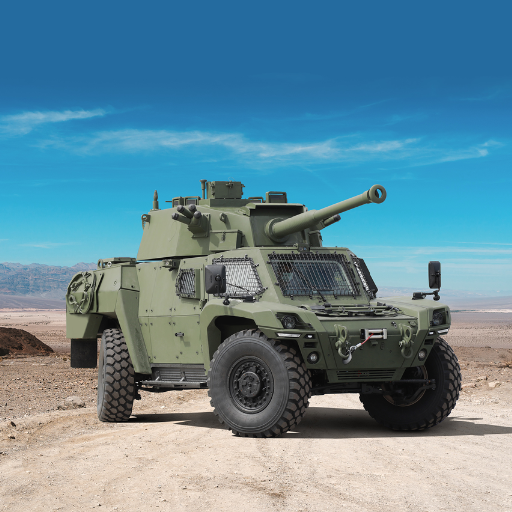
One of the fields in which Electrification promises to be of significant support is the military, where it assists in increasing operational efficiency and reducing reliance on conventional energy sources. The value attached to Electric Military Vehicles arises from the fact that these machines function in complete silence, limiting any detectable sounds to the immediate area where they are based. This makes them very useful in stealth missions, as they have a reduced thermal signature. Moreover, such electrification makes it simple to lighten the load of soldiers by the equipment and other mission-critical items, such as power generation. Furthermore, the incorporation of electric vehicles, which are either hybrid-powered or run purely on electricity, eliminates the need for maintenance and logistical support and is more reliable in highly challenging operational environments. This trend aligns with global efforts to upgrade militaries and mitigate the destructive effects of human activities on the environment.
Combat Vehicles
The adaptation of combat vehicles to meet the demands of modern conflicts is an ongoing process, and artificial intelligence has been actively involved in this area. Critical is the introduction of intelligent systems equipped with AI, which monitor the environment and make informed decisions responsibly without suffering from information overload, for military personnel. With this feature, the devices can operate in hazardous or secure areas, minimizing the risk to human lives. Several systems are commonly used in vehicles, including a modular approach to design that allows for varying missions. Armour, weapon systems, and communication systems can also be fitted, depending on the mission at hand, such as communication and air defense, among others. The increased onboard communication system facilitates integration, and a common command directs all units for enhanced tactical efficiency.
Support Vehicles
In modern military operations, support vehicles play a crucial role and are responsible for the logistics of advancing units and operational tasks of these units, which are often based at a distance from the starting point. They are designed to carry various resources, equipment, and troops, even to the most hostile terrains. Recently, there have been efforts aimed at enhancing their speed, economy, and sturdiness to make their services more functional even in hostile environments at a lower cost. For example, unmanned support vehicles may be used to deliver supplies in conditions that are risky or in a location where other supplies can not be accessed without the danger of human loss. Additionally, the provision of high-tech onboard telematics systems for support vehicles also enables remote and faster decision-making and management of real-time flotilla operations, thereby lowering inefficiency. Being dynamic, therefore, they are still a very essential tool in maintaining combat effectiveness and enhancing combat power.
Transport and Logistics
It is essential to recognize that the transport and logistics sector also has its own share of technological advancements. In the era of software technology, technocrats and stakeholders can develop systems and tools that enable the efficient and easier delivery of transport services. A new risk of relying on non-conventional micros for inter-city transport services before proper guidelines and standards are established is emerging. Moreover, some breakthrough technologies, such as unmanned surface autonomous vehicles and drones, come in handy during the delivery process, facilitating the faster completion of the last part of the delivery cycle while preserving the environment. Furthermore, the use of blockchain technology is varied, particularly in the transportation sector, where the traceability of data increases, and the safety of data also improves, thereby reducing defects and fostering cooperation between disputing stakeholders. This means that the existing parameters of the transport and logistics sector make it possible for opportunities for rapid development to emerge in the changing global market.
Impact of Technological Advancements on Efficiency
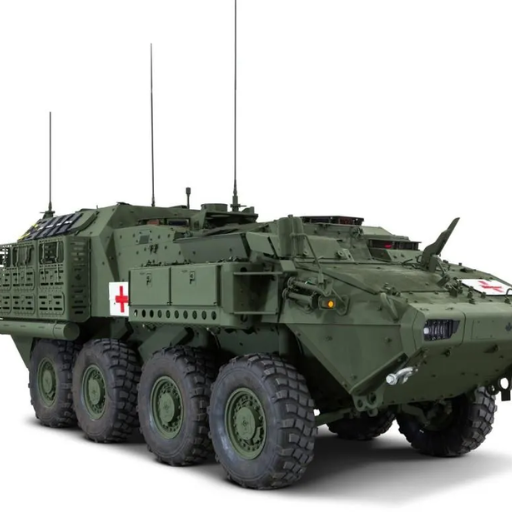
The transportation industry has undergone a significant revolution with the help of technology over the years that have passed. For example, robotics and other AI-based automation have significantly decreased the cost of operations in logistics, as well as the costs of Bills of Materials and HR. The elimination of errors and enhancement of accuracy in operations is also achieved through these intelligent technologies. Assuming that crate tracking and transparency in supply chain decision-making would not have been beneficial, and deliveries would have been missed more often, as is currently happening. Moreover, advanced route planning technologies will enhance fuel efficiency levels, resulting in cost savings and environmental preservation. These advances have enabled the industry to meet increased demands while maintaining its dependability and cohesiveness.
Innovations in Propulsion Technology
Improvements in technology related to movement systems and driving forces for machines have significantly influenced the economic development of any organization, resulting in improved performance and efficiency, as well as a reduction in environmental impact. One of the most frequent innovations is the use of electric propulsion featuring batteries or fuel cells that power electric motors and significantly reduce the use of conventional fuels. This transition is especially prominent in the motor industry or aerospace sector, although the shift towards fuel reform is on a much grander scale. The progress in hydrogen technology has facilitated the emergence of avionics that do not produce greenhouse gases. As a result, hydrogen technology can certainly be deemed as viable in the long run.
Benchmarking Performance Standards
Performance benchmarks are essential tools for comparing the effectiveness, durability, and reliability of propulsion systems. Contemporary benchmarks focus on metrics such as fuel consumption, discharge rates, and durability time. Hybrid systems, however challenging to optimize, are capable of achieving improvements in fuel consumption levels under various technical and operational loads, thereby reproducing better performance under realistic utilization conditions. Usually, the priority in hydrogen fuel systems is given to issues of volume, power density, refueling time intervals, and carbon dioxide neutrality. In addition, thrust components are tempered by existing control thresholds that continue to rise, apart from the conventional developmental targets; such performance benchmarks are designed to cater to the recent construction innovations that are entirely required, particularly in the application of exciting fuel research under current environmental conditions.
Partnering for Development
The optimum application of hydrogen fuel and propulsion systems primarily requires collaboration to expand the technology. Technology cannot be effectively embraced without the support of industry, research, and policy. Combined efforts, e.g., during outlay of financial resources on research, help develop learner structures and explore new materials, investigate high-strength alloys, next-generation catalysts, and contribute to various efficient systems, which are harder to establish without such an effort. System collaboration enables users to increase production levels effectively, which in turn allows them to reduce production costs and also improve accessibility of the technology. Cross-sectoral cooperation provides a mechanism for exchanging good practices and knowledge, enabling the more efficient use of energy worldwide.
Case Studies of Military Motors
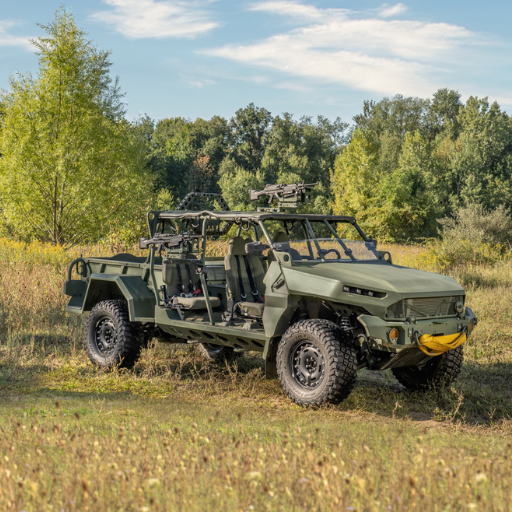
Case Study 1: Advances in Hybrid Power Systems
An outstanding case of war machine innovation is the use of a hybrid electric powertrain in war machines. This technology combines the use of internal combustion and electric motors for performance reasons. It was also noted that the use of the hybrid electric powertrain enables the military to achieve more rolling hours, quieter operation, and an increased mission radius in the absence of diesel fuels; however, further studies would still be necessary for these new engines.
Case Study 2: Development of All-Electric Motors
It is thoroughly implemented because Electrical Engineering is a rapidly developing discipline, and the use of conventional driving systems is no longer practical. The Virginia-class submarines, powered by electrical systems to reduce noise and fuel consumption, as well as equipped with electrical storage systems, stand out significantly in the waters of the US Navy with their green design and operational standards.
Case Study 3: High-Torque Motors for UAVs
Electrical motors were marketed to startups specializing in electric-powered propulsion. They can be attached to tiny and light vehicles, and this new addition to the unmanned aerial vehicle has taken it to a new level of sophistication. For example, NATO was able to create powerful drones that are lauded for their high mobility in reconnaissance and surveillance, thanks to the help of these motor technologies. This recent industry innovation has highlighted the urgency for improving the motor geared for various military applications.
F414 Engine in Combat Aircraft
The F414 engine is a crucial component in new models of military aircraft, renowned for its exceptional quality and efficiency. This power plant represents an example of an afterburning turbofan jet engine, which generates 22,000 lbs of thrust power, hence making it a choice for top-performing fighter jets such as the Boeing F/A-18E/F Super Hornet and the Saab Gripen E. Constructed from the latest materials and incorporating the most recent technological advances, the engine is designed for high fuel economy and low-frequency maintenance. The existing multi-part mode enables the use of compact and modular designs within aerodrome systems, allowing for the easy integration of those modular parts into different systems. This is exemplified by the modular architecture of the F414 Engine, which makes it adaptable to various applications. Additionally, it is noteworthy that the F414 Engine is equipped with advanced digital engine control systems, which provide greater precision and efficiency in a variety of climates without compromising the required performance.
Legacy Systems vs. Modern Solutions
Although legacy systems continue to function flawlessly and have been effective for a long time, they may fall short of meeting the requirements of modern technologies in terms of scalability, effectiveness, and compatibility. It is challenging for newer systems to enable new abilities or adapt to increased capacity, which can render operational workflows less efficient than they should be. Conversely, current technologies emphasize flexibility, rapid data processing, and the inclusion of recent technological advancements, such as AI and cloud-based services. For example, the evolution in the provision of digital services has led to the development of systems capable of handling large amounts of real-time data, which facilitates quicker decision-making and, in addition, improves operational outputs. However, though they are still considered valuable in certain instances that are less taxing, the drive towards contemporary designs is a critical requirement if the expanding need for innovation and development is to be achieved within a technology-driven realm that is continually changing.
Proven Success Stories in Defense
In many countries, people have developed innovative defense methods by utilizing high-level technology. Especially in the interaction of artificial intelligence (AI) and machine learning, these instruments have enabled the improvement of opportunities for detecting external threats and responding to them, thereby reducing the time required for response and decision-making. In turn, defense agencies have in numerous instances exploited drones capable of semi-autonomous flight, as well as analytical imaging, thus enhancing surveillance photography in the harshest terrains. Cybersecurity has also become a crucial addition to physical defense capabilities, protecting defense systems from internal attacks and theft, and preventing the loss of projects and resources through measures like encryption, which employs advanced encryption mechanisms. Defensive forces in the 21st century will most certainly not remain so, considering the latest technologies in maneuvering tactical responses, as well as administrative approaches, they will improve the metrics used for evaluation.
Reference Sources
-
Electric Hybrid Powertrain for Armored Vehicles
- Summary: This study explores the design of a serial hybrid electric power system for heavy armored vehicles exceeding 50 tons. It highlights the advantages of hybrid systems, such as improved acceleration, smoother rides, and reduced fuel consumption due to fixed RPM operation of internal combustion engines.
-
The Next Generation Combat Vehicle Electrical Power Architecture (NGCVEPA): An Overview
- Summary: This paper provides an overview of the electrical power architecture for next-generation combat vehicles. It emphasizes the need for abundant onboard electrical power to support advanced capabilities like electronic warfare and integrated defense systems.
Frequently Asked Questions (FAQs)
Q: How does engine technology impact the performance of military vehicles?
A: Military vehicles depend greatly on propulsion technology. Technology will be at the center of most military moving vehicles, such as the next-generation fighter jet engines of the F-15 and F-16 aircraft, which offer excellent performance and maximum efficiency due to their advanced engines, comparable to those found in sports cars. Relying on engine power thus increases the performance of ground vehicles, especially those of their off-road versions, which utilize powerful engines capable of exceptional performance on various surfaces. They primarily discuss new developments and strive to improve the performance of military engines in response to the latest requirements of the armed forces. Due to the latest improvements in MRO (Maintenance, Repair, and Overhaul) implementation, military machines are also optimized for their intended use and ready for combat at all times.
Q: What are the benefits of using legacy military motor designs?
A: Using obsolete automotives for military applications allows better cooperation between different levels of operations. These vehicles may be from the past generation, but they are durable; so, especially when companies take them everywhere, old technology is called for rather than discarded. Older machinery, such as that found in traditional armored and tank transportation equipment, can be modernized and documented according to appropriate standards. Procedures without having to create any more drawings. Such an extension of refurbishment is valuable in the sense that it allows military services to enhance the performance without having to part with previous assets. Lastly, as the motor manufacturers may have prices lower than the other contractors, they may guarantee that the different intermediaries streamlining and ensuring product manufacturing are never at a loss at any time, and even the old motor might be put to combat ability.
Q: What role does commercial technology play in military motor development?
A: To the question of militarization, commercial development is essential because it promotes innovation and easy access to equipment. Very often, businesses producing military equipment cooperate with commercial ones in customising and modifying commodities for defence, so that the parts supplied for the vehicles are, by and large, the best in the industry. Take, for instance, the almost identical advancements in power trains and fuel efficiency in commercial vehicles, and apply the same principles to military cars; it has clearly made them more efficient in terms of warfare. In this way, it brings hope of creating next-generation cars that meet the needs of the armed forces, utilizing commercial resources and the best engineering techniques.
Q: How do military motors ensure support for the warfighter in combat?
A: Military vehicles are typically developed with the end user in mind, thereby enabling the usage of the vehicles under harsh combat conditions. The power trains in these vehicles are designed to ensure power efficiency and manoeuvrability, which are the primary aspects required in cars such as the Bradley and other fighting vehicles of its kind. Moreover, advancements in the technologies used in the motor side of the motors enable the motor units to perform efficiently even in the complex conditions of the battlefield. When designing these motors, manufacturers invest in the hardy and rugged type of build, which is beneficial in this kind of gadget as it increases the total protection to the crew and the equipment.
